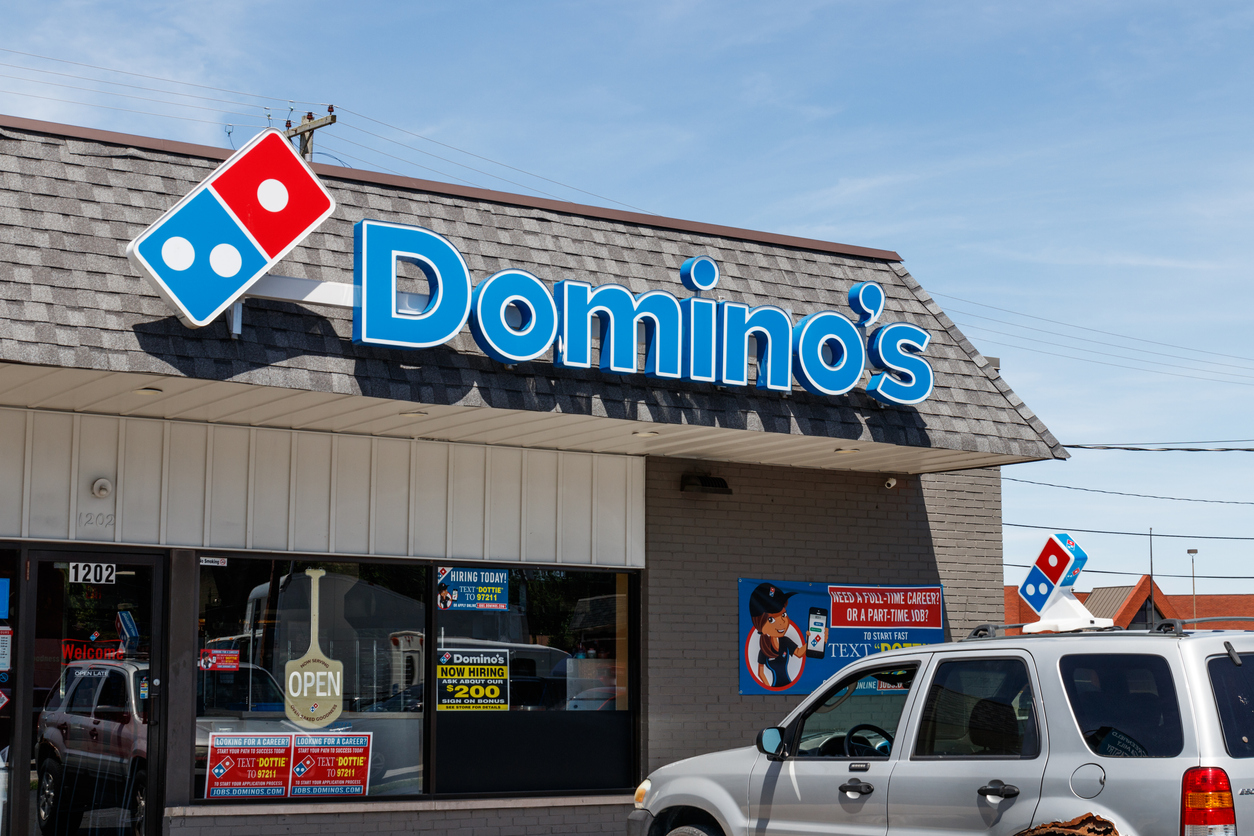No one likes to be left out of something as delicious as pizza, but that’s exactly how Domino’s has made at least one person feel, thanks to their website. In 2016, Guillermo Robles, who is blind, filed a lawsuit against the chain under the Americans with Disabilities Act (ADA) because their website and app are not accessible to the blind.
Robles said that even though he was using screen reading software that is designed to translate website text for people with impaired vision into sound or a braille pattern, he still wasn’t able to order. He argued that this violates Title III of the ADA, which states in part that: “No individual shall be discriminated against on the basis of disability in the full and equal enjoyment of the goods, services, facilities, privileges, advantages, or accommodations of any place of public accommodation by any private entity”. In non-lawyer speak, this means that private businesses intended for public use (including restaurants) must make sure they can accommodate and serve people with disabilities.
Because lawsuits take longer to prepare than a deep dish pizza, it took years for Robles to hear a decision. Originally, Robles’ lawsuit was dismissed by a district court; but in January 2019, the Ninth Circuit Court of Appeals (the last round of court before the Supreme Court) decided that if a business has physical premises as well as a website, all of its services — including the digital ones — must meet ADA standards.
Instead of accepting this decision and doing their best to update their website to accommodate customers with disabilities, Domino’s decided to take the decision all the way to the Supreme Court. In their appeal, they pointed out that the 12 federal Courts of Appeal (which includes the Ninth Circuit) disagree over whether websites must comply with the ADA. They also point out that more people have been filing lawsuits against businesses with websites that don’t comply with the ADA rules, claiming that the Ninth Circuit’s decision “would turn that flood of litigation into a tsunami.” Domino’s have a flair for drama:
In some states, the rule is that the internet is “a place of public accommodation,” and therefore every business that has a website and/or app must make them ADA accessible — whether they also have physical facilities or not. Meanwhile, other courts have decided that only businesses that have physical stores have to make their digital services accessible — and some of those courts have said that as long as disabled customers can access the services one way (e.g. by going to the physical place) the business is complying with the ADA.
So yes, there is some confusion, and a Supreme Court decision could help settle this question by setting a firm precedent. But many people think that Domino’s refusal to just abide by the ruling and make their disabled customers feel welcome is putting them firmly on the wrong side of history.
Can it really be that hard for a giant company to do something about this?
But they’d rather go to court.
It’s not putting them in a good light.
Hey @dominos please explain why you’re trying to fight making your website accessible for blind people like me? Do you not give a fuck about us, because it kinda looks like you don’t give a fuck about us.https://t.co/fkyujOV6lC
— DaShea Lankford🩷💜💙 (@gothicqueen95) July 29, 2019
Others used the ruling to slam Domino’s food:
And their leadership:
In addition to being ethically bad, it’s not even good business!
People have decided they’ll be getting their pizza needs met elsewhere:
Time for a boycott.
#BoycottDominos if they want to discriminate.
— Laurie Mehta, OFS (@MehtaLaurie) July 26, 2019
A blind man couldn't order pizza from Domino's. The company wants the Supreme Court to say websites don't have to be accessible https://t.co/8Ee0EYt0RL
Everyone deserves access to pizza:
Pizza should be accessible to everybody!!!
— emmett naughton (@EmmettNaughton) July 26, 2019
It’s worth noting that Domino’s aren’t the only targets of ADA lawsuits.
The new year brought a lawsuit claiming a Beyonce’s website violated the ADA. It shows that #accessibility isn’t a feature on the modern web; it’s a requirement.https://t.co/AsWZisRskz#SmallBiz pic.twitter.com/px34JXNVko
— Jacob Martella (@ViewFromTheBox) February 4, 2019
Between 2017 and 2018, the number of lawsuits against alleged ADA non-compliant websites rose from 814 to 2258.
Over 2,000 lawsuits were filed in 2018 in website-related #ADA cases, alleging that company websites were not accessible to the blind or visually impaired. @HenlawSWFL reports. https://t.co/3oTjs9rfdN pic.twitter.com/7KirDoXidh
— LexBlog (@LexBlog) July 30, 2019
It’s making some businesses sit up and pay attention.
We are excited about our redesigned website that is not only mobile friendly and ADA compliant, but also has improved functionality and enriched content. Check out our first blog in a series about our redesigned website. https://t.co/GumfJ62DOB#websitedesign #vending pic.twitter.com/h1Nnza83bx
— Uselectit Vending (@uselectit) July 21, 2019
And is a timely reminder of why the ADA is so important.
Today is 29 years that ADA - the Americans with Disabilities Act - was passed. While the world is becoming more accessible, we still keep fighting for our rights to full & equal access. Sadly, the number of lawsuits is increasing.. #inclusion #diversity https://t.co/w1FNSZtIpH
— Svetlana Kouznetsova (Accessibility Consultant) (@svknyc) July 26, 2019
The Supreme Court is inundated with as many as 8,000 cases per term, and only hears approximately 80 (one percent), while giving a decision on a further 100 in writing. Which means that there’s a chance that they may choose not to hear this one. For now we’ll have to see if justice, unlike Domino’s, will be served to people with disabilities.

